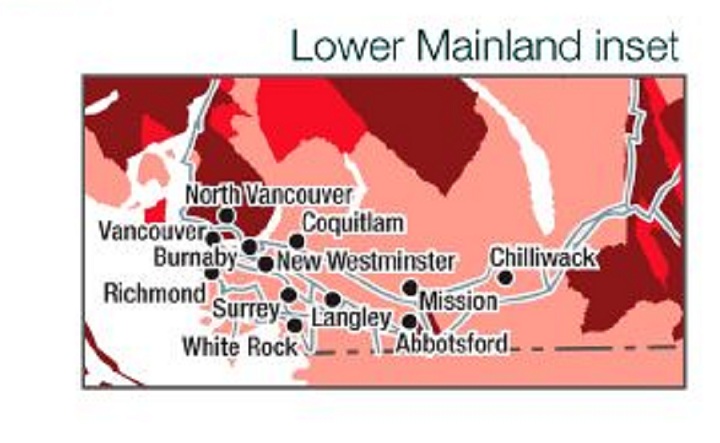If you live almost anywhere on the North Shore, your home may be exposed to a threat that’s naturally produced, colourless and odourless – and you wouldn’t know it’s present, unless you tested for it.

The threat? Radon gas, which is the second leading cause of cancer. The gas is made when soil breaks down and experts say there could be more of it in your home than you may realize.
According to environmentalists, the North Shore is a region with a higher than average risk of radioactive poisoning. It’s only been recently that scientists have been able to map out the regions across B.C. and the rest of the country where residents would be cautious about the potentially carcinogenic gas, radon.
“Radon is a radioactive gas it occurs naturally in the rock and soil, under and around our homes,” explains Allan Whitehead, Radon Environmental Management.
He says the danger occurs when radon starts seeping into homes and since the gas is odourless and colourless, it leaves residents unaware that its pooling to toxic levels.
This colour coded map (below) shows where toxic levels are more likely to happen with red being the highest and blue the lowest. One region in B.C. that’s in the red is Castelgar, where 750 homes were recently tested by Whitehead’s company.
While the geology of the North Shore and the Upper Fraser Valley are the most capable of producing radon gas, experts warn a serious problem can develop even in low risk zones.
There is good news since homeowners are able to test their dwellings for roughly $35. Even fixing the problem can be relatively inexpensive, ranging from $500 to $3,000.
“It’s called a soil depressurization system and it’s passive or active,” Northern Health Authority’s Kim Menounos told Global News. “Passive means there’s a pipe running from the floor of the basement, the hole is in the floor and the pipe runs from that hole and exits the house, and vents the radon to the outside.
“The only difference between a passive and an active system is that there’s a fan installed in an active system to create constant negative pressure that sucks it right out of his house.”
The president of Radon Environmental Management knows firsthand about the hazards. His wife developed lung cancer and when they went back to the house they lived in for six years, they found radon levels 20 times higher than acceptable in Canada.
~ with files from Ted Chernecki
- ‘A new beginning’: First Nation ravaged by B.C. wildfire unveils new subdivision
- B.C. teen’s killer says new TV show about Reena Virk’s murder ‘disrespectful’
- Man accused of Victoria carjackings arrested a third time in as many days
- ‘If we stay with it, they will come’: Canucks sticking to game plan with series tied 1-1





Comments